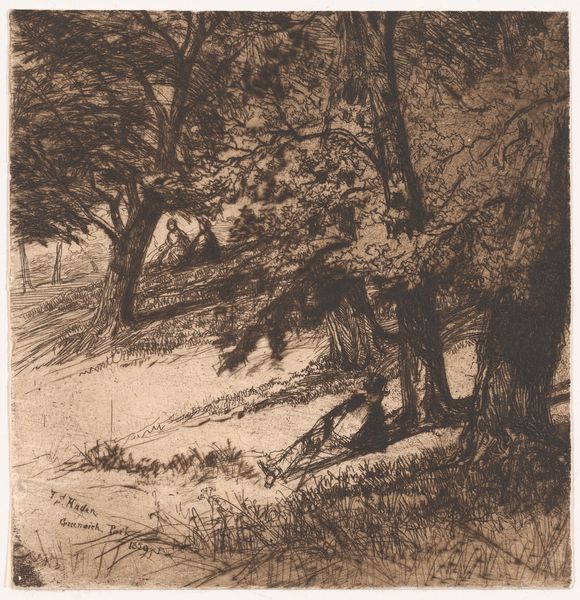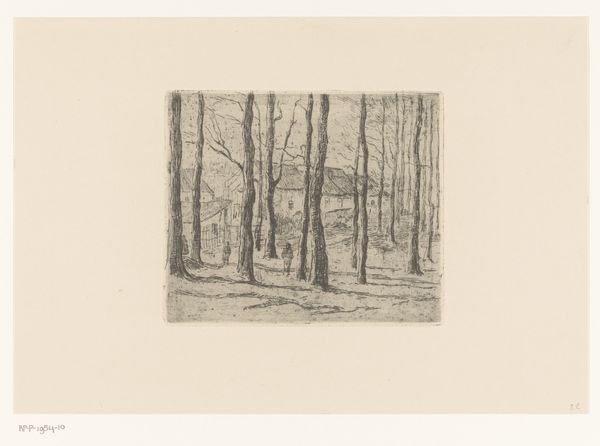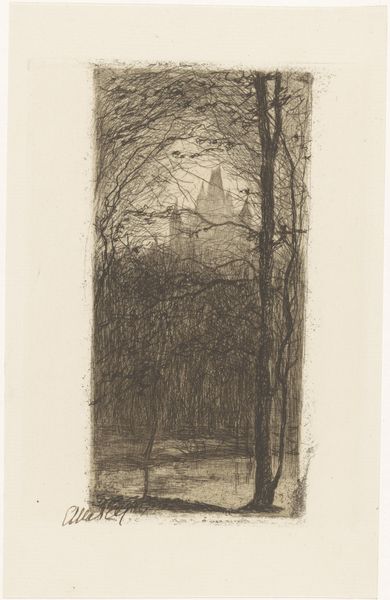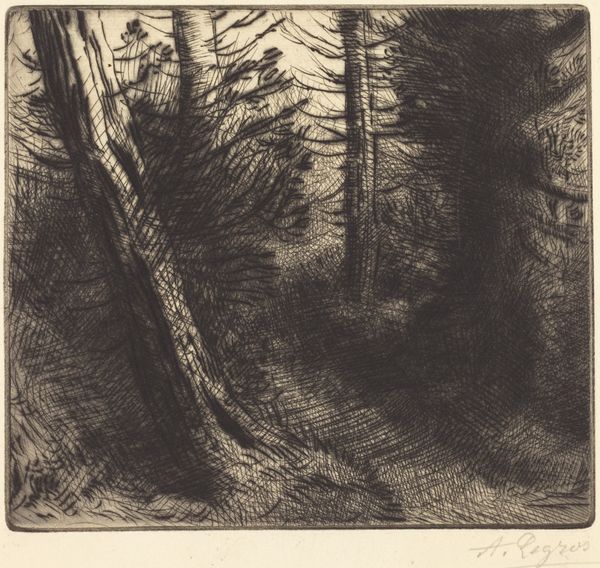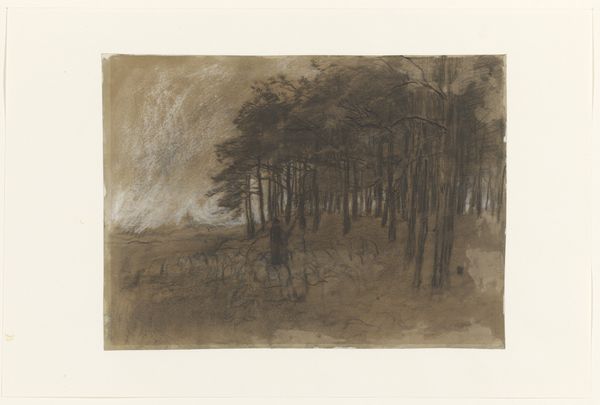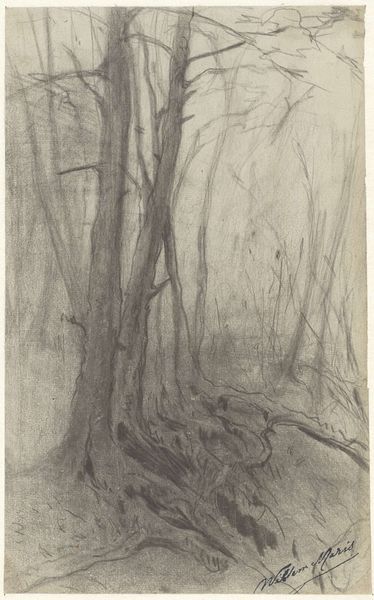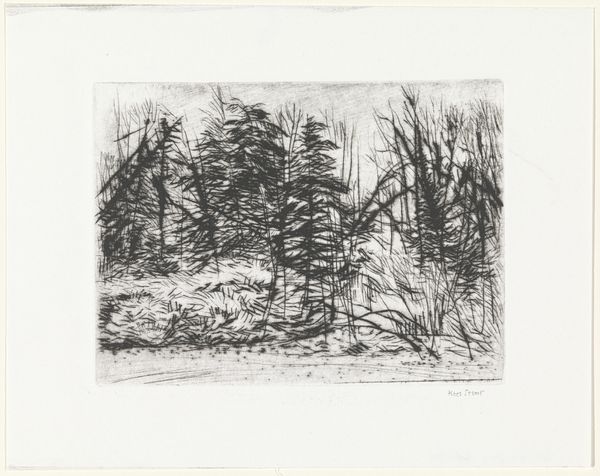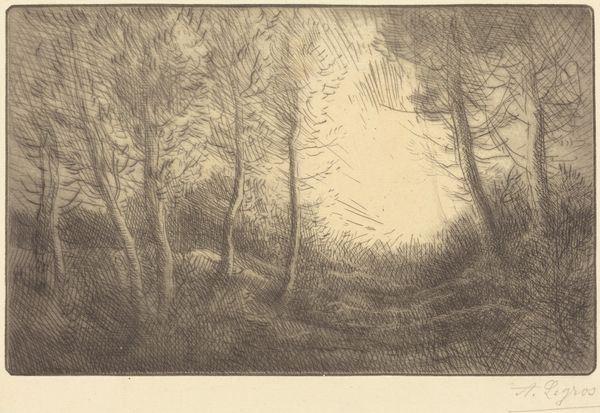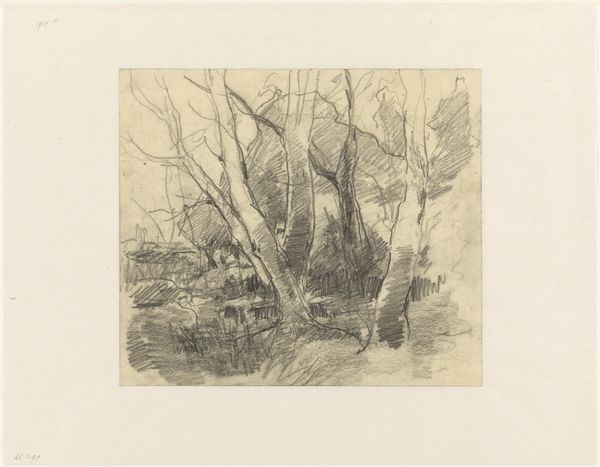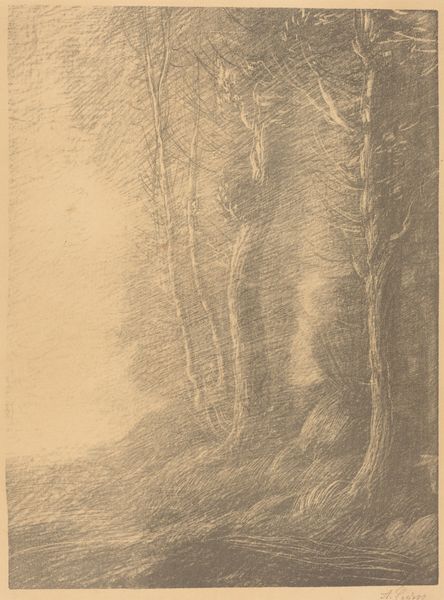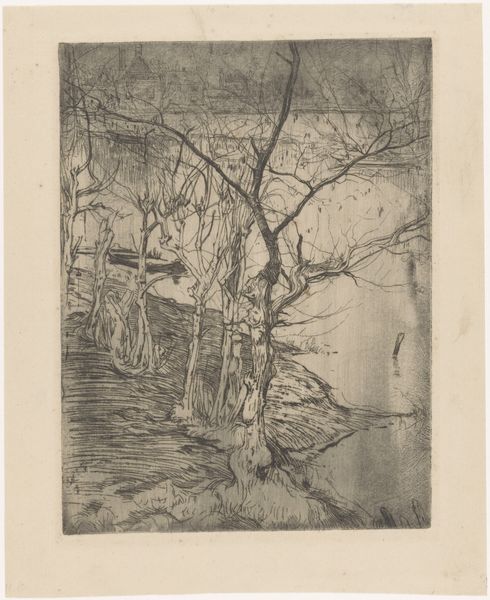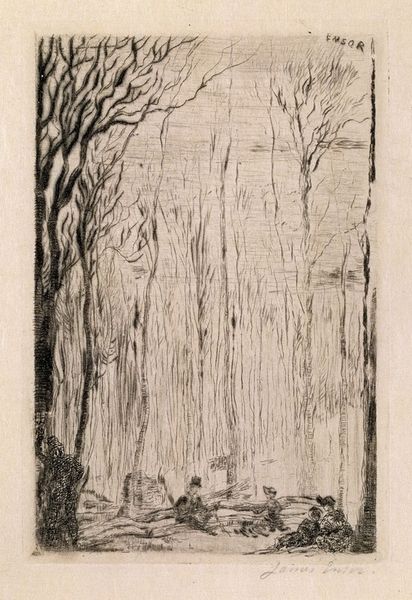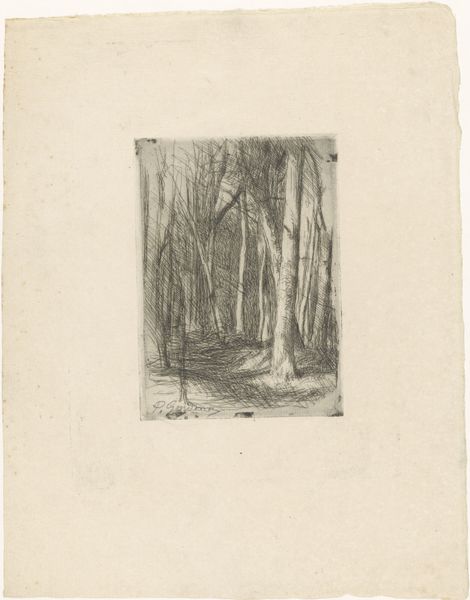
drawing, plein-air, watercolor
#
pencil drawn
#
drawing
#
impressionism
#
plein-air
#
pencil sketch
#
landscape
#
watercolor
#
pencil work
#
realism
Dimensions: height 86 mm, width 125 mm
Copyright: Rijks Museum: Open Domain
Editor: This is "Gezicht tussen bomen," or "View Among Trees," a pencil and watercolor drawing by Sientje Mesdag-van Houten, created sometime between 1844 and 1909. The immediate impression is one of intimacy, like a stolen glance into a secluded part of the woods. What do you see in this piece, beyond the trees themselves? Curator: What strikes me is how this work encapsulates a critical juncture in art history and ecological awareness. During Mesdag-van Houten's time, the rise of industrialization deeply impacted our relationship with nature. How does the artwork function as a lens through which we might examine our evolving perception of landscape and the implications of resource extraction on environmental and social harmony? Editor: That's an interesting take! I was so focused on the composition, I didn’t consider its context. Curator: Consider also that as a woman artist in the 19th century, her engagement with plein-air painting, typically a masculine domain, challenges the prescribed gender roles. The choice of a seemingly "unremarkable" forest view could be seen as a deliberate departure from the grand, heroic landscapes favored by male artists. Could the artist's own experience navigating societal constraints inform her subtle defiance of artistic norms through her art? Editor: I see your point. It's like she’s reclaiming space, both literally in nature and figuratively in the art world. I’d not considered the socio-political message within the landscape. Curator: Exactly! Art provides these unique perspectives, offering silent, yet potent social commentary. Considering the identity of the artist alongside environmental and socio-political movements broadens the meaning we extract from art history. Editor: Thanks, I hadn't thought about it that way before; I will definitely remember this during my future analyses!
Comments
No comments
Be the first to comment and join the conversation on the ultimate creative platform.

